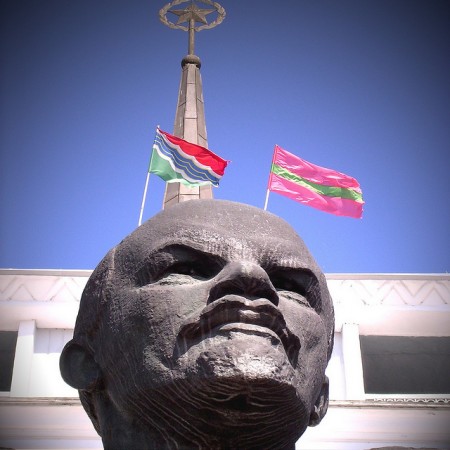
Two unprecedented visits by Russian senior state officials have been made over the past few weeks in Tiraspol. On 12 April, Transnistria was visited by Defence Minister Anatoliy Serdyukov, and on 16–17 April by the deputy prime minister and special presidential envoy, Dmitry Rogozin.
In turn, on 18 April in Vienna, in the framework of the international negotiating format for the Transnstrian conflict, two documents were signed, which defined the principles and the agenda for substantive negotiations (the 5+2 format includes Chisinau and Tiraspol as parties to the conflict, Russia, Ukraine and the OSCE as the mediators and – since 2005 – the European Union and the United States as observers).

- The very fact that Russian politicians of such high rank have visited the unrecognised Pridnestrovian Moldavian Republic is an unprecedented sign of
Russian interest in this area and an expression of its support for this separatist republic. It also is a harbinger of further strengthening of Russian
institutional, economic and military presence in its territory. In particular, the visit by the defence minister, which took place despite the Moldovan
government not having been consulted or even informed about it, means that Russia, while theoretically recognising Moldova’s territorial integrity, is
ready to disregard it in practice.
- Dmitry Rogozin’s statements and the course of his talks in Chisinau (which he also visited on 16 April) indicate that the goal of the Russian policy is
to bring about the resolution of the Transnistrian conflict by creating a federation (or more accurately a confederation) between the Republic of
Moldova and Transnistria, with Russia’s military presence maintained.
- Unlike in 2003, when the Kremlin, while seeking a similar solution to the Transnistrian conflict (‘the Kozak Plan’), acted outside the international
negotiating format, currently it strives to win international legitimacy for its implementation. For this purpose Russia since 2011 has been seeking to
revive the 5+2 negotiating format, which was suspended in 2006. Formally, negotiations were resumed in September 2011, yet they were impeded by
procedural issues, the most important of which concerned the formulation of the principle of equality of the conflict parties in the negotiating
process. It was only at the meeting on 17–18 April that a compromise on this was achieved and this has opened up the possibility to put these
negotiations on track.
- To make Chisinau accept the resolution of the conflict on Russian conditions, Moscow will uses such tools as residence registration rules for Moldovan
expatriate workers in the Russian Federation, conditions of access for Moldovan agricultural and food products (especially wine) to the Russian market,
and the existence of a debt worth approximately US$3 billion for Russian gas consumed in Transnistria, for which the Republic of Moldova is formally
responsible.
Resolvable Frozen Conflict? Designing a Settlement for Transnistria
For more information on issues and events that shape our world please visit ISN Security Watch and the ISN’s featured article, “Whither Goes Russia in the Post-Soviet Space?”

